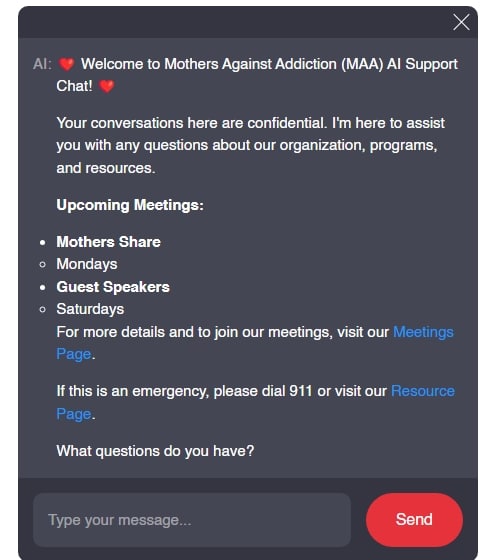Fentanyl is at the forefront of the opioid epidemic, and parents across the nation are grappling with the fallout of this dangerous drug. Understanding fentanyl, what it is, and why it’s so deadly is crucial for families already affected by addiction or those who want to prevent tragedy. This synthetic opioid has been making headlines and creating heartache, and as we dive into its impact, we hope to shed light on how parents can navigate these choppy waters with resilience.

Understanding Fentanyl: What It Is and Its Medical Uses
Fentanyl is a synthetic opioid typically used in medical settings for pain management. Imagine it as a supercharged painkiller; it’s often prescribed to those experiencing severe pain after surgery or those living with chronic conditions. Due to its potency, fentanyl is 50 to 100 times stronger than morphine. This ensures it packs a punch when it comes to pain relief, but it also sets the stage for potential misuse and devastating consequences.
It’s easy to dismiss the power of this substance, especially when it’s associated with healing and care. However, its effectiveness can quickly spiral into danger if not monitored closely. We can’t ignore that fentanyl doesn’t just come in prescription form—it’s also being manufactured illicitly and sold on the streets, creating serious risks for users. Many who might think they’re experimenting with a ‘normal’ drug could very well be taking fentanyl without even knowing it.

The Top 7 Reasons Why Fentanyl Is So Deadly
Fentanyl’s dangers are myriad, stemming from its design and the environment in which it circulates. Let’s explore seven factors that make fentanyl particularly lethal:
With as little as 2 milligrams being potentially lethal for most individuals, locking down the correct dose can feel like a game of Russian roulette. The tiniest miscalculation could turn a casual evening into a deadly one.
Fentanyl hits fast—users may not realize how deeply it’s affecting them until it’s too late. This quick uptake can lead to overdoses, especially for those misjudging their own tolerance.
The illegal manufacture of fentanyl is skyrocketing. Often mixed into other narcotics like heroin or cocaine, users are unwittingly ingesting life-threatening doses. There have been cases where counterfeit pills, resembling common medications like Xanax, contained deadly amounts of fentanyl.
Many users, and even some healthcare providers, may not fully grasp the dangers of fentanyl. This ignorance can lead to tragic outcomes, where patients may receive negligent prescriptions or administer drugs without proper supervision.
Fentanyl binds quickly to opioid receptors in the brain, making it incredibly addictive. For those with prior substance use issues, falling into fentanyl use can happen faster than they anticipate.
Fentanyl often evades standard drug testing, complicating addiction treatment and overdose responses. It’s vital to know what a person has taken to provide appropriate medical care, but without that knowledge, staff can be left scrambling.
The global market for fentanyl is booming, particularly from countries like China, which exacerbate the crisis in various communities. This malicious supply chain ensures a constant flow of cheap, intense drugs leading to more overdoses.
Fentanyl in Spanish: Understanding the Global Impact
The issue extends well beyond U.S. borders; the fentanyl crisis is making waves around the globe. In Spanish, fentanyl is called “fentanilo.” It is crucial to target Spanish-speaking populations with educational resources about the risks associated with fentanyl. Organizations committed to battling addiction are beginning to develop materials in Spanish to reach individuals and families that might otherwise be left out.
Just as we advocate for change and support, it’s essential that messaging resonates across cultures and languages. When parents learn about the risks surrounding fentanyl, they become empowered to protect their children and advocate for comprehensive addiction resources.
Moving Forward: Combating the Fentanyl Epidemic
Confronting the fentanyl crisis means tackling it on multiple fronts. Education plays a vital role; teaching parents, caregivers, and communities about the dangers of fentanyl is paramount. We need to push for enhanced prescription practices and better access to treatment programs for those struggling with addiction.
Advocacy is another powerful tool in our arsenal. Through grassroots movements and community rallies, we can unite to combat illegal distribution channels while raising the profile of addiction awareness campaigns. Take it from families who have suffered losses—together, we can effect significant change.
Innovative Approaches to Healing
As the fentanyl epidemic continues, innovative solutions are popping up everywhere. Personalized rehabilitation programs tailored to individual needs are reshaping how treatment is viewed. Adaptations in the digital space have allowed for expansive networks of support that cater to those in recovery, making it easier for individuals and families to find solace without judgment.
Many communities are rallying support through social media platforms, sharing personal stories that enlighten and inform. These grassroots campaigns are proving to be effective catalysts for change—reaching audiences both young and old, reminding us that healing can happen in unexpected ways.
As we stride into 2024, let’s persist in driving awareness of fentanyl and its insidious nature. Through educational efforts, advocacy, and community cooperation, we can slowly turn the tide against this devastating epidemic, ensuring that the tragic cycle of addiction and loss is broken for future generations.
Remember, if you’re a parent feeling overwhelmed by the challenges of addiction, you’re not alone. Visit Mothers Against Addiction for resources, support, and to connect with others facing similar struggles. Together, we can be resilient against the shadow of addiction and create a brighter future for our children.
Fentanyl What: Understanding Its Nature and Dangers
Fentanyl is a synthetic opioid that’s 50 to 100 times stronger than morphine. It’s often used medically for pain relief, but it’s also notorious for its potency when misused. Here’s where things get tricky—many people who struggle with addiction often do so without realizing the risks associated with prescription medications. A great resource to learn about the contributing factors to addiction can be found here. Interestingly, it’s reported that you can use fentanyl without ever realizing it’s in a product. Some synthetic drugs are mixed with fentanyl to keep costs down, raising the stakes significantly for users.
Fun Facts About Fentanyl
Did you know that fentanyl was actually first synthesized in 1960? It was designed to help patients undergoing surgery and is an integral part of operating rooms today. However, due to its potency, it can lead to overdose quickly—often within minutes. A sobering example of how this drug impacted lives is the case of George Huguely, which emphasizes the need for awareness and prevention, available through Mothers Against addiction. The sheer volume of fentanyl-related overdoses has sparked debates about how society confronts addiction.
You might ask, “How did we get to this point?” Well, some believe it ties into a prevailing attitude of personal entitlement—much like the mental disorder Of personal entitlement, where individuals feel a sense of ownership over substances that contribute to their downfall. Watch the film Conviction if you’re interested in how addiction can alter the course of someone’s life. This perspective on addiction goes beyond just the individual; it reflects societal challenges that require addressing.
The Human Cost of Fentanyl
Fentanyl doesn’t discriminate; it impacts people from all walks of life. Studies show that addiction is a risk factor that can be influenced by various elements such as family history, environment, and mental health. This is why it’s crucial for communities and families to stay informed. Moreover, take a look at cultural touchstones, like Tim McGraw’s evolution in the public eye at a relatively young Tim mcgraw age and how personal struggles can affect fame. Even pets are not immune. A recent survey revealed that some pet foods contain low levels of fentanyl, highlighting just how far this drug has seeped into everything—echoing the idea that no one is truly untouched, not even our furry friends who might end up with The Farmers dog.
In conclusion, understanding “fentanyl what” isn’t just an academic exercise—it’s a vital part of protecting ourselves and our loved ones. By learning and discussing the facts, we can be better prepared to confront the challenges posed by this potent substance and promote healthier futures.





























